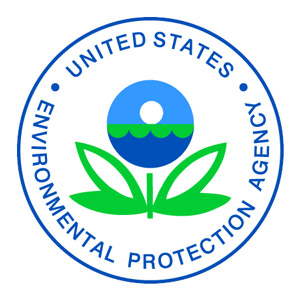
LOGO: EPA
Pest management professionals (PMPs) always have placed great faith in available products. Mosquito control products handle mosquitoes. Termiticides rarely fail. General pest control products do the job.
But it is no accident that products help make PMPs so vital. Manufacturers are required to make sure products are tested, and data sets have been collected before registering their products, or even just to add any new pests to an existing label.
Data sets don’t always have to be submitted and reviewed by the U.S. Environmental Protection Agency (EPA). In fact, the EPA only will review data for certain uses:
- Termiticides and other wood-destroying insect (WDI) control claims require data review (Editor’s Note: See “Testing continues on 2 termiticide candidates,” February 2021 issue).
- General pest products for “public health pests” require data review. Public health pests were designated in 2002 via the EPA’s Pesticide Registration Notice 2002-1.
- Antimicrobials such as disinfectants always have had very specific requirements and are regulated under a different division at the EPA.
PROPOSED UPDATES
This spring, the EPA proposed an expansion and clarification of data requirements for public health and WDI. For the insects PMPs manage, the list of pests has been expanded and now stipulates parameters. For example, under the proposed regulations, for a product to claim efficacy against true powderpost beetles, “testing on one subspecies from the Lyctinae subfamily is required.”
To claim wood-destroying or wood-boring beetles on a label would require testing on Anobiidae, Bostrichidae, and Hylotrupes bajulus (old house borer). These requirements will tighten standards and further ensure efficacious products.
To claim cockroaches on the label, two of eight identified species would have to be successfully controlled. If a product only works on German cockroaches (Blattella germanica), for example, then only German cockroaches would be claimed on the label. This will lead to a whole new meaning of “reading and understanding the label.”
The agency solicited public comments on the proposed changes, and various commenters pointed out that while they support the concept that ineffective products won’t get registered, there are some technical challenges. Going back to the beetle example, the proposed rule states that full “structural protection” claims must be achieved by testing the noted species with 95 percent prevention of damage to wood for at least five years. Protocols are not clear, and labs that can test beetle efficacy are rare.
This same challenge exists for other pest claims as well. Carpenter ant structural protection claims will require 95 percent prevention of damage to wood for at least five years. This sounds nice, but testing methods are still somewhat undefined, even with current guidelines.
The EPA has spent years developing this proposed rule. The next step is for the agency to review comments and consider the points raised by the commenters. It might issue a Final Rule with no further input. This will move the current practices from guideline to regulation under Title 40 Code of Federal Regulations, Part 158. If the EPA does issue this Final Rule, there is a huge task ahead to update the current Product Performance Test Guidelines, which set protocols for proving efficacy. While this change might benefit PMPs by making sure new manufacturers market products that have acceptable efficacy, there is a potential disadvantage: As labels state target pests, they likely will be more specific and might not cover the entire group of pests (such as cockroaches) in general.
As with any seemingly logical initiative, a good idea viewed as uncontroversial becomes an issue when commenters point out that exceptions must be considered. If the protocols for testing are updated so all products receive the same treatment and the efficacy requirements become final, then reviews should go much faster, with fewer negotiations by the manufacturers. If that is achieved, it will be beneficial to all.
Leave A Comment